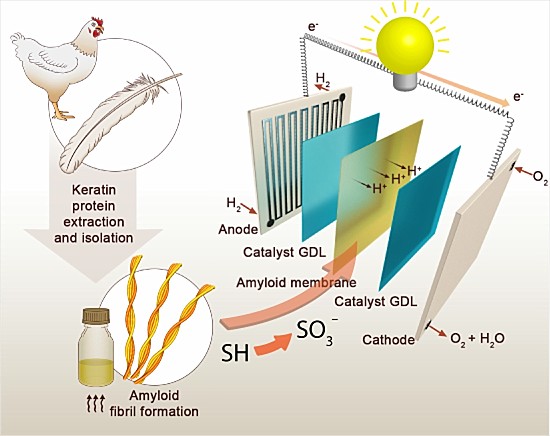There is one certainty in the food industry today. Chicken is in. A 2014 livestock census showed there were 21 billion chickens on Earth, more than 3 per person back then. Today that number has grown as a rising middle class in China and other Asian countries have adopted more meat in their diets.
With all those chickens, what happens to the feathers? In the past, they have gone into landfills or have been incinerated. Both are environmentally challenging at a time when we are looking at more sustainable and green practices.
What if chicken feathers could be repurposed? In the old sitcom, The Dick Van Dyke Show, one episode called “The Case of the Pillow” involved the purchase of expensive new pillows supposedly filled with duck down. When the husband begins sneezing near the pillows they find out that rather than duck down, the pillows contain “cheap, chopped, chicken feathers.” This becomes the basis for a riotously funny court case.
Are chicken feathers ever used by commercial pillow makers as fillers? I couldn’t find any in my Google search. But chicken feathers do have post-chicken value.
Tyson is one of the largest meat processors in the world. The company harvests 40 million chickens weekly. A byproduct of that harvest includes 450 million kilograms (a billion tons) of chicken feathers.
What has Tyson done with them in the past? The feathers have either been incinerated or gone to landfills. But with a mandate to develop more sustainable and green practices, Tyson has sought more environmentally friendly ways to deal with its chicken feather problem.
What’s In Chicken Feathers That Makes Them Valuable?
Feathers, chicken or otherwise, are 90% keratin. Keratin is a protein found in our fingers and toenails, as well as in hair, wool, and animal hooves. It can be processed into fibres. Currently, Tyson is using chicken-feather fibres for liners in disposable diapers. It is also exploring new uses of the feathers for making bioplastics, bioadhesives, shampoos and lotions.
What else can keep chicken feathers out of incinerators?
Scientists at Switzerland’s ETH Zurich and Singapore’s Nanyang Technological University have come up with a novel invention extracting keratin from chicken feathers to make very fine fibres called amyloid fibrils. These fibrils are woven into semipermeable membranes for use in the operation of hydrogen fuel cells where the membranes filter charged particles to complete the electric circuit.
Before this discovery, conventional fuel cells have been using membranes made from “forever chemicals,” materials that don’t easily break down and that are toxic and expensive. In contrast, the membranes made from chicken feathers are natural, environmentally friendly and three times cheaper.
Raffaele Messenga is a Professor of Food and Soft Materials at ETH Zurich. A news release from the university quotes the Professor who states, “We’re taking a substance that releases carbon dioxide (CO2) and toxic gases when burned and using it in a different setting: with our new technology it not only replaces toxic substances but also prevents the release of CO2, decreasing the overall carbon footprint cycle.”
Amyloid-fibril membranes have another use related to hydrogen as well. Electrolyzers are used to produce hydrogen by splitting water (H20) into its two constituent elements. Hydrogen is abundant in The Universe but here on Earth it rarely is found in its elemental form. With the growing interest in replacing fossil fuels with green hydrogen harvested from water, this invention should be in demand.
The research team has produced a paper published on September 26, 2023, in the journal Applied Material Interfaces. They recently filed a patent as well and are seeking commercial partners to bring their chicken-feather-based membrane to market.
















